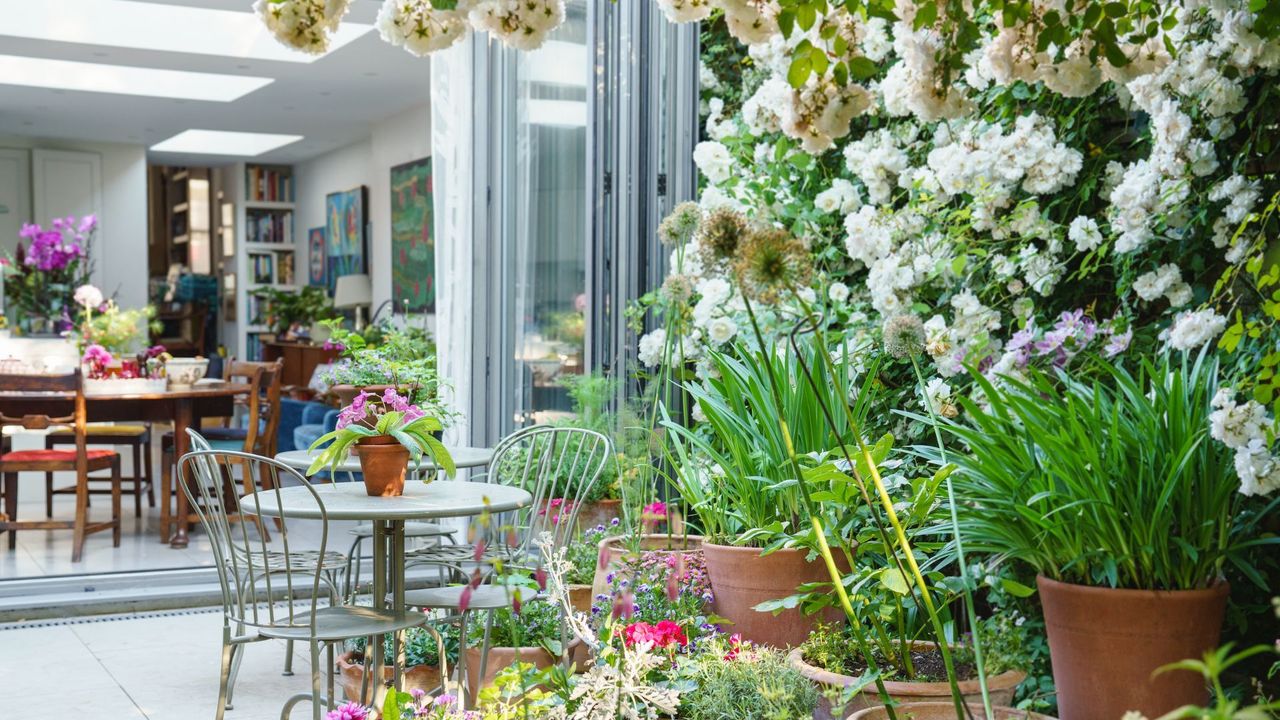
Nestled amongst the rapid-fire real-time jostle of central London is a perfectly formed, delightfully pretty and seemingly unruffled rose garden. It was designed by Jo Thompson for her client, who, having recently returned to London after living in California, was keen to include plants she'd not been able to grow in the Californian climate.
On discussing the plans for this narrow garden with the client, the memo was clear: include as many rose varieties as possible. Here, the color choices are poised and thoughtful across a spectrum, from the palest porcelain pink to rich, deep magenta. The long, thin, serpentine shape of the garden is transformed into a cocooning, peaceful spot that is unapologetically feminine and bountiful.
Take a sneak peek inside this immersive mecca of a rose garden, as I speak to Jo to find out what piqued her interest, guided her design decisions, and what roses made the roster.
'The brief for this city garden was to include as many roses as possible, which meant using the verticality of the garden to full effect,' explains Jo.
'She also wanted a garden that could be enjoyed by her large family. A place where everyone could come together, but with enough separation that not everyone had to see each other all the time.'
As you step onto the terrace that leads directly off the kitchen, you are greeted by a huge mane of unruly white roses, Rosa ‘Felicité Perpetue', to be precise; a harbinger of things to come.
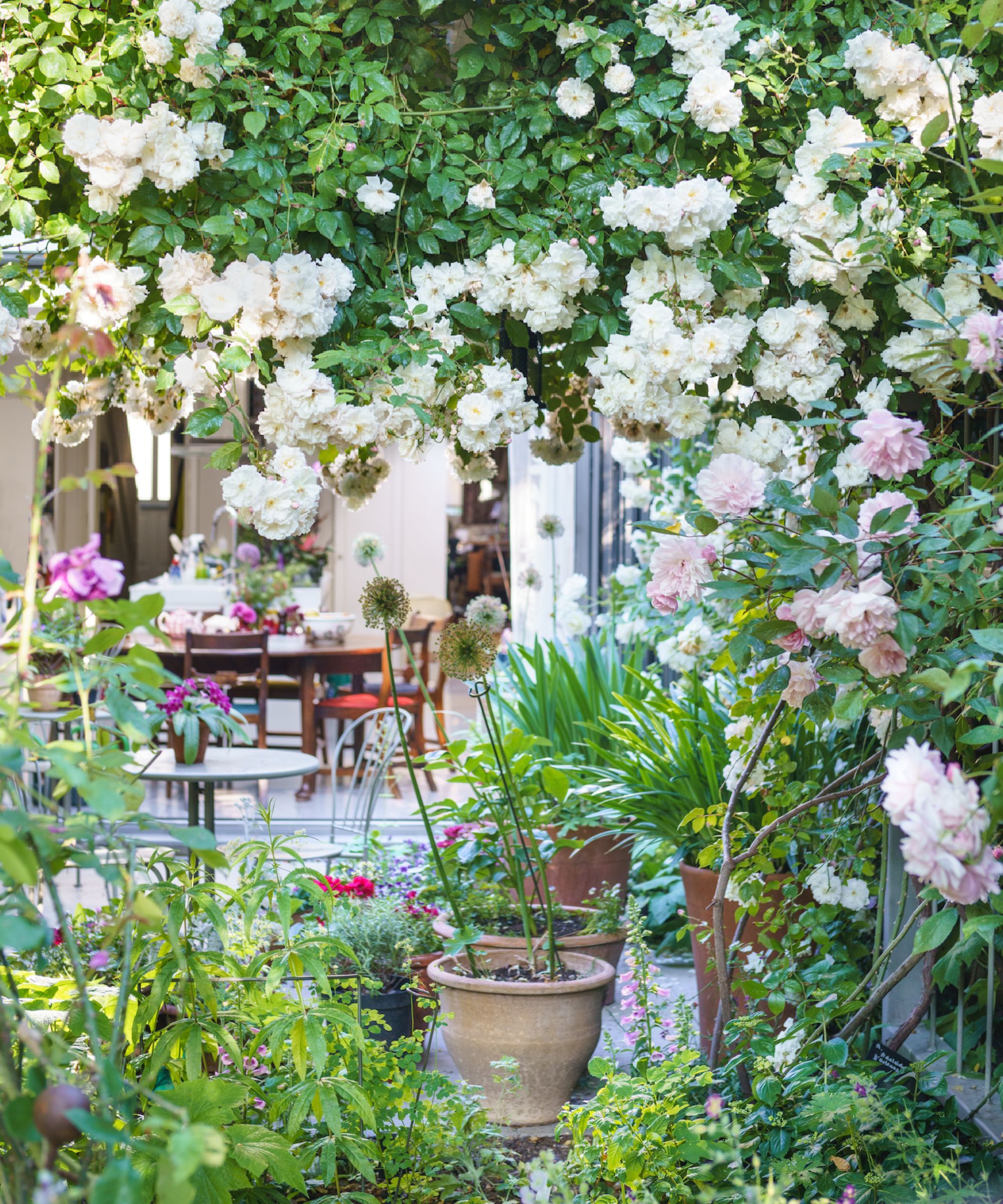
Selecting which roses to include in a rose garden is no mean feat. The Rosa genus is colossal and brimming with potential winners for this space.
'I looked closely at the tone of each rose’s color and the overall form of the plant – whether it naturally arches and droops, or is better suited to climbing across a wall.' Jo explains.
'Fragrance was another key factor, as was ensuring a succession of blooms throughout the season. I wanted to avoid everything flowering at once, so I selected varieties with different flowering periods, including some that repeat-flower, to bring lasting interest and scent to the garden.'
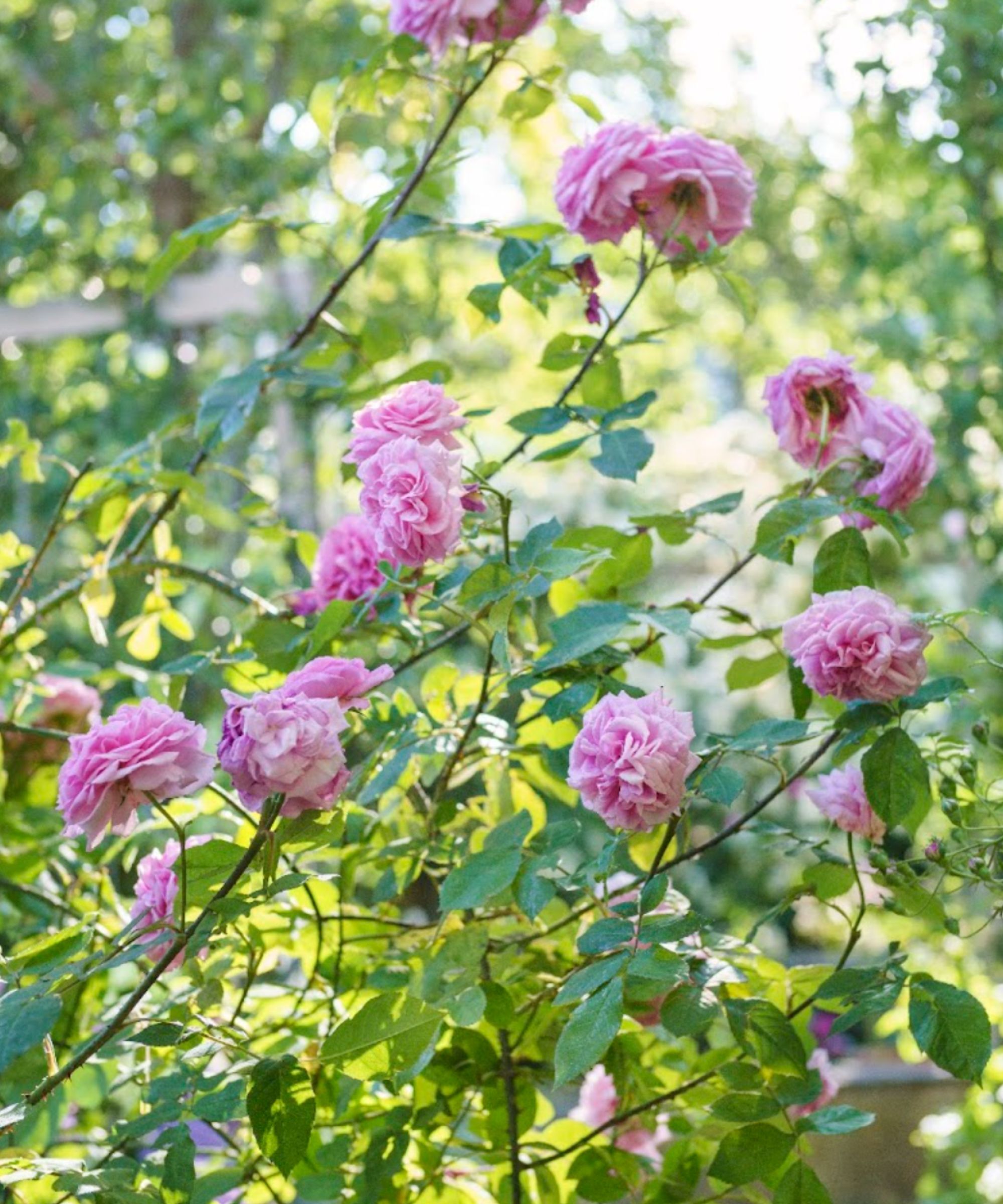
Planting roses en masse will always look tumultuously romantic, but a garden dominated by roses runs the risk of having a brief, albeit spectacular, carnival-like display, fading all too soon and all too suddenly.
For any garden designer, planting cunning successions of plants with different seasons of interest is key, especially when working with a vast amount of roses, which return to architectural skeletons during winter. I asked Jo how she approached tackling this stumbling block.
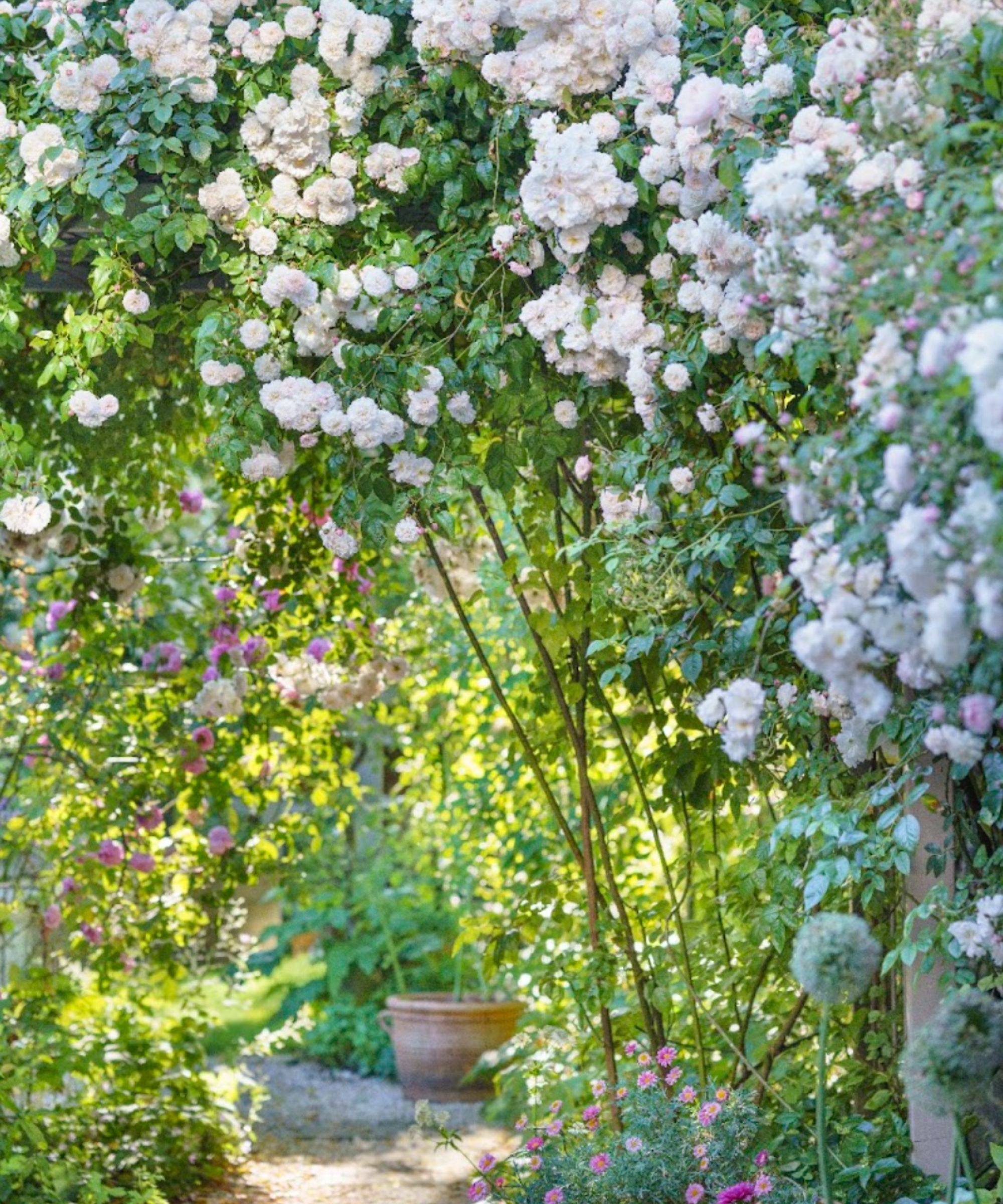
'While roses are very much the stars of the show, the planting is layered with other carefully chosen companion plants, ' Jo continues.
'Clematis ‘Étoile Violette’, Clematis alpina ‘Foxy’, and Clematis alpina ‘Willy’ help to extend the flowering season, weaving through the structure to add depth, variety, and an extra lift of color. The palette centres on soft pinks and whites that tumble through the space, layering beautifully for a romantic feel.'
'Beyond the clematis, a selection of perennials and structural shrubs ensures the garden remains engaging long after the main rose season. Plants such as Echinops ritro ‘Veitch’s Blue’, Geranium ‘Brookside’, and Alchemilla mollis bring texture, movement, and a natural rhythm to the space, so that even without the roses in bloom, the garden still feels rich, alive, and full of character.'
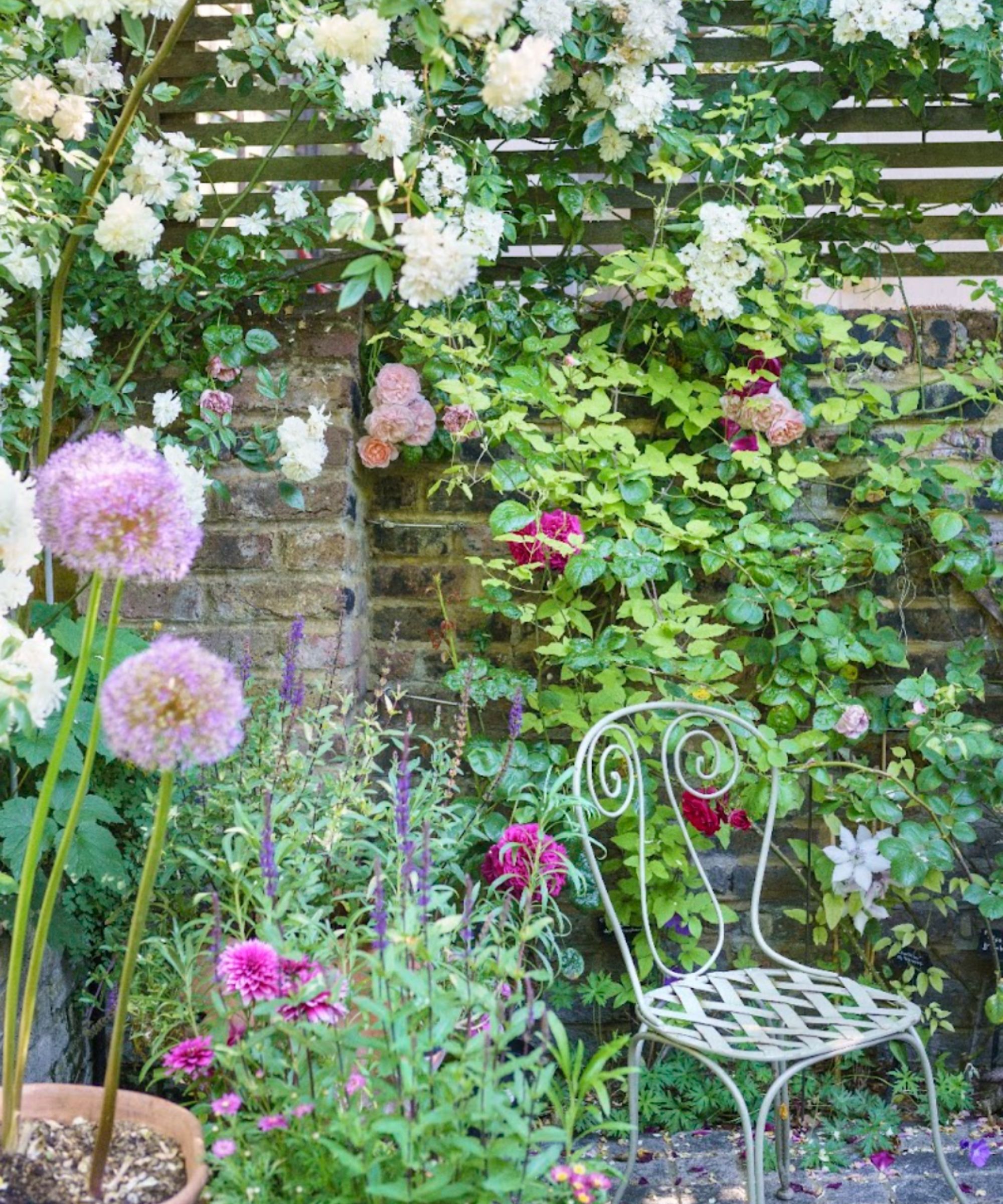
'Bespoke steel pergolas run the length of the space, providing structure while supporting an abundance of climbing and rambling roses and clematis.' Jo continues.
'Gardens are three-dimensional spaces, offering vertical as well as horizontal opportunities for planting — and here, we made full use of that by maximising the use of climbing plants.'
'The result is a romantic, immersive atmosphere, with layers of climbing plants helping to screen the garden from the tall surrounding houses and create a strong sense of enclosure.'
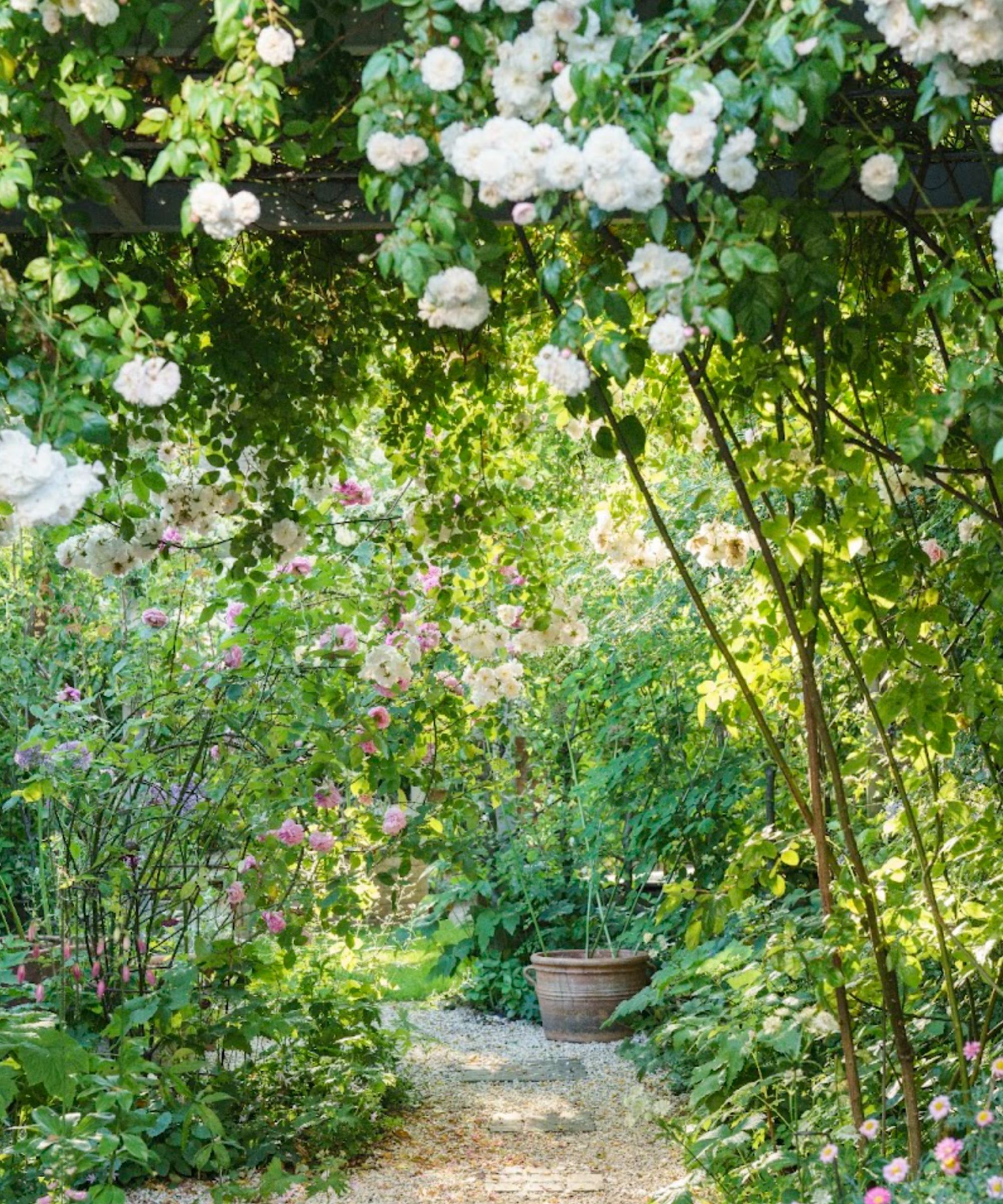
'Staggering sightlines were key to creating depth and a sense of discovery. In a long, narrow city garden, it’s easy for the eye to take in the whole space in a single glance – but I wanted to slow that journey, encouraging people to explore.'
'By positioning hedges and structural shrubs at intervals along the length, the garden reveals itself gradually, with each section offering its moment and character.'
'To achieve this, I used a mix of hornbeam and pleached apple trees for height and structure, combined with carefully placed shrubs that break up the view without feeling heavy or closed in. This layering draws you through the garden, making it feel both larger and more immersive.'
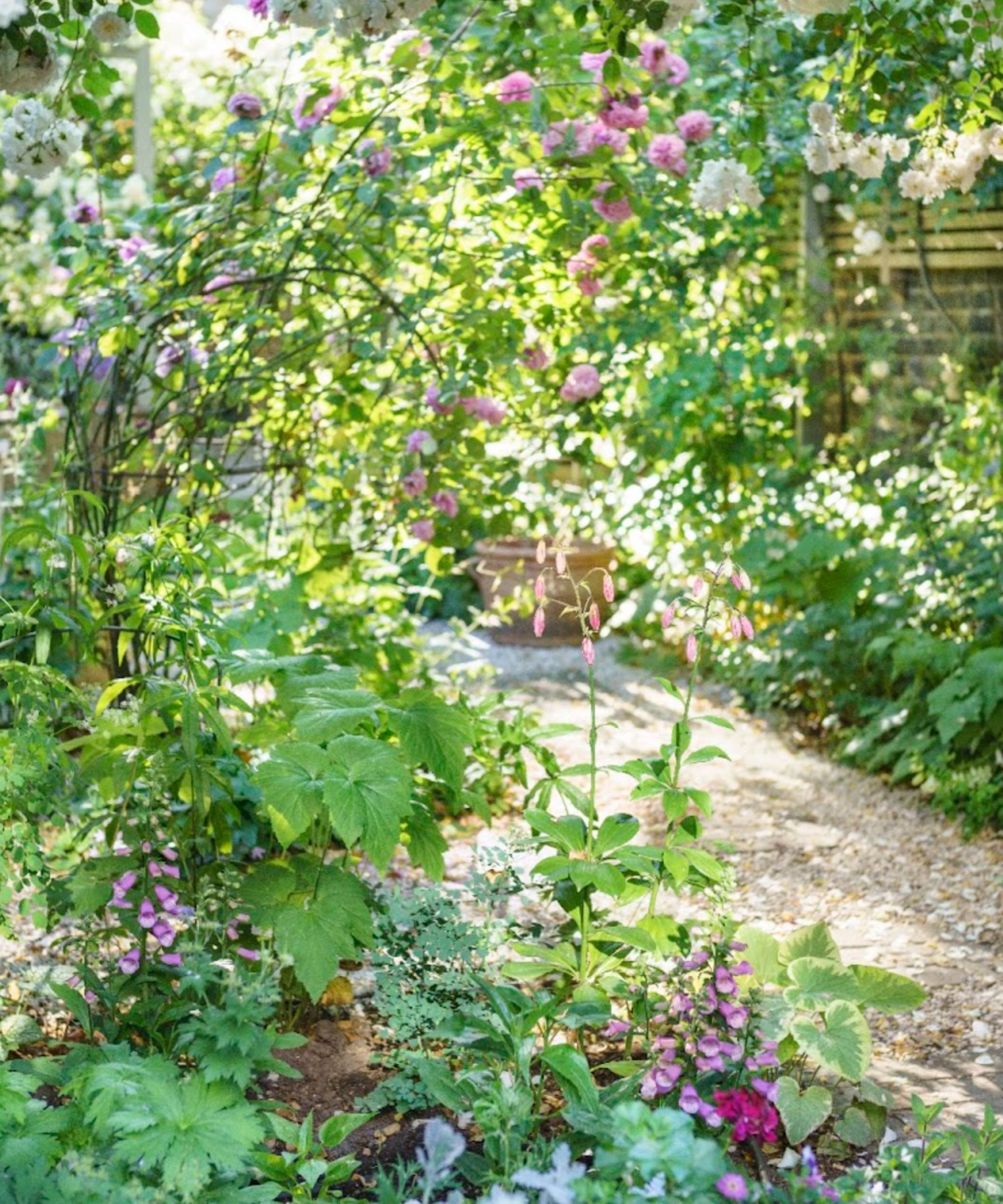
Shop our highly recommended roses
A stunning shrub rose for flower beds, with an unbelievably beautiful heady fragrance and always a flutter with masses of bees and butterflies. This David Austin rose is one of their very best.
A staggeringly beautiful and luscious rose which I grown in large groups in my garden surrounded by Alchemilla and Clematis 'Ville de Lyon'. It is a top performer with a classic old rose scent and the most incredible deep crimson blooms.
Once voted the most popular rose in the world, New Dawn performs unlike any other climbing rose I have ever seen. She is a prolific repeat bloomer that tolerates shade, wind, rain and even known to bloom when the snow is falling. One to get your hands on, quick.
Although it stands to reason that the best roses for small spaces are those with less rampant growth, in fact, in more compact gardens with less square footage, this garden is a good reminder that big plants in small spaces often work best.
Rose gardens, however beautifully designed and harmonized, can run the danger of being visually indistinct. That's where adding over-the-top volume and seemingly disproportionate height will pay off and make the space truly captivating.
That, and having no fear, as Jo has done so marvellously in this garden, to use roses as architectural elements that give depth to the scheme.







